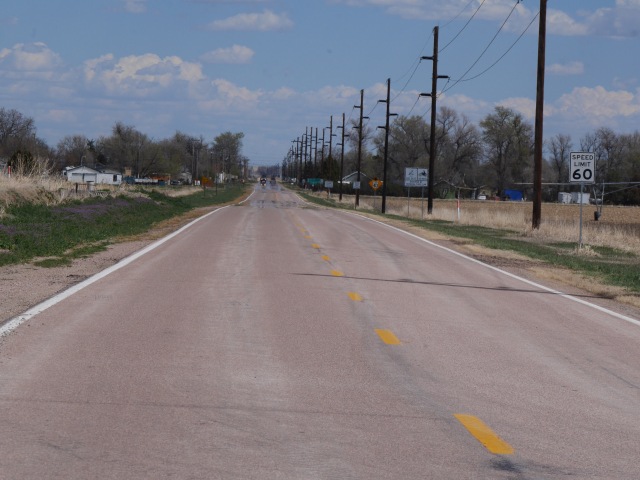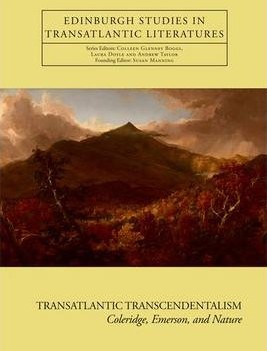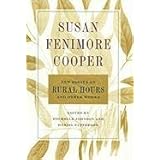
Sandhill cranes on the Platte River, Nebraska. National Geographic wallpaper

Nebraska state line. My photograph.
A sense of time lies thick and heavy on such a place . . . . The cranes stand, as it were, upon the sodden pages of their own history.
Aldo Leopold, A Sand County Almanac and Sketches Here and There (1949).
On a windy morning in April I embarked on a journey through eastern Wyoming towards Nebraska to see sandhill cranes. The great spring sandhill crane migration is one of the world’s sublime wildlife spectacles: for sheer scale, the Audubon society compares this northward flight of more than half a million birds with the movement of wildebeest across the plains of southern Africa. Another comparison might be with the herds of millions of bison that roamed the North American prairie, before their near extinction in the second half of the nineteenth century. By 1833 there were no bison east of the Mississippi, and by the end of the century only 23 plains bison remained living wild in a remote corner of Pelican Valley, Yellowstone National Park. I think also of the much smaller population of greater sage grouse, a threatened prairie bird species whose habitat of sage-brush and other native flora is being eroded, and which I was privileged to see on a visit to Wyoming two years ago (“Sage Grouse Lekking and Canyon Fiction” 2014). The cranes are nowhere near extinct, though. Upwards of half a million – estimated to be around 80% of the global species population – stop to feed each February until early April along an 80-mile stretch of the Platte River in western Nebraska on their way to breeding grounds further north in Minnesota, Wisconsin, Michigan, Oregon and Idaho up through Canada to Alaska and eastern Siberia. The waters of the Platte run in the opposite direction, flowing into the Mississippi and thereby eventually into the Gulf of Mexico. I think about the flow of water and birds, like great lifelines crossing and connecting bioregions and biomes. The cranes thrive in the summer tundra and wetlands of the boreal forests (taiga or snow forests), nesting in reeds and marsh vegetation. Their diet includes berries – I remember the intense flavour of wild raspberries during a visit to British Columbia.
A birder friend had provided directions, down to the very marsh and fields near Table Mountain in which he’d seen around a thousand cranes a week earlier. A favourite passage from Aldo Leopold’s “A Marshland Elegy,” in A Sand County Almanac, came to mind and increased the excitement:
A dawn wind stirs on the great marsh. With almost imperceptible slowness it rolls a bank of fog across the wide morass. Like the white ghost of a glacier the mists advance, riding over phalanxes of tamarack, sliding across bogmeadows heavy with dew. A single silence hangs from horizon to horizon. . . .
A sense of time lies thick and heavy on such a place. Yearly since the ice age it has awakened each spring to the clangor of cranes. The peat layers that comprise the bog are laid down in the basin of an ancient lake. The cranes stand, as it were, upon the sodden pages of their own history.

Crane at the Iain Nicolson Rowe Sanctuary for the Platte River ecosystem, Nebraska. rowe.audubon.org
A week earlier, an Audubon trip to Hutton Lakes near Laramie had included seeing a golden eagle, basking in the sunshine on a rock that would have intensified the thin warmth at an elevation of 7220ft. The distance between us and the bird was such that powerful binoculars or a scope were needed to see any detail. With just the naked eye, the eagle looked like a small craggy, projecting rock. Magnification showed its powerful shoulders and hard, sharply hooked beak. Behind us, a huge bald eagle winged across the blue sky at a similar distance. Robinson Jeffers’ austere lines on the persistence of eagles come to mind:
And Lenin has lived and Jehovah died: while the mother-eagle
Hunts her same hills, crying the same beautiful and lonely cry and is never tired; dreams the same dreams,
And hears at night the rock-slides rattle and thunder in the throats of these living mountains.
Robinson Jeffers, “The Beaks of Eagles.

Hutton Lakes, 9 April 2016. My photograph.
Warmth was the problem with my crane excursion. The chill wind of Hutton Lakes had given way to several balmy days with temperatures into the low 60s Fahrenheit. I’d been advised that I needed to make my journey because the migration would soon be over: the last birds leave in early April. During the three-hour drive north-eastwards above Cheyenne, a tumbleweed (salsa triagus, salsola iberica, salsola kali) bowled across the road into a barbed wire fence. It arrested my attention. I stopped to take a photograph and saw how in their spiny tussle over territory, the barbs of the weed and wire echoed one another in a frenzied dance of strands, blades, and spikes.

Tumbleweed and barbed wire. My photograph.

Tumbleweed and barbed wire 2. My photograph.
Weed and wire are icons of invasion and agents of colonisation. Commonplace and a staple flora of western movies, tumbleweed is associated with the old western U.S.A. Its common name, Russian thistle (another is “wind-witch”) betrays its origins. Tumbleweed was introduced to north America in the 1870s in seed flax brought by Russian migrants who settled to farm in South Dakota. For more discussion, see The Culture of Wilderness: Agriculture as Colonization in the American West (1996), by a friend and colleague at the University of Wyoming, Frieda Knobloch. The process of association continues and I’m reminded of Edward Abbey’s rebarbative activist George Hayduke in The Monkey Wrench Gang, with his allergy to “that exotic vegetable from the steppes of Mongolia.” Barbed wire – described by Hayduke’s fellow monkey-wrencher Seldom Seen Smith as a “tetanous steel” that “catches coyotes too, and golden eagles” – was patented by Joseph Gliddens in Ohio in 1874, as a means of protecting land rights by keeping animals in and people out.
As the land through which I pass becomes drier, there there’s an increase in the population of soapweed yucca (yucca glauca). Common and, like the tumbleweed, considered an invasive nuisance, this most widely distributed of North America’s yuccas is nevertheless listed as an imperilled species in Missouri. The crushed roots lather when mixed with water and can be used as a natural shampoo.

Soapweed Yucca (yucca glauca). My photograph.
My three-hour journey northwards through Hawk Springs to the lower elevation of 4050ft near Table Mountain ends when I arrive at the Goshen Lower North Platte Wetlands complex. Frogs sang and midges whined. A Swainson’s hawk watched from a fence post. The sun’s rays beat down with intensity. There was not a crane to be seen. Either they’d already migrated northwards or were further east, perhaps beyond the confluence of the North and South Platte Rivers.

Marsh without cranes, Goshen North Platte lower wetlands wildlife complex. My photographs.
Well, it would be a lie to say that I wasn’t disappointed. An evening engagement in Laramie meant there wasn’t time on this visit to travel much further. But you don’t have to try all that hard to look beyond the sandhill cranes to see the beauty and dignity of this grasslands and ranch border country with Nebraska. I drove for several miles through an area farmed with arable crops, grass for hay, and cattle.
It’s not only the cranes that stand upon the waterlogged pages of their own history. Rusting vehicles in yards – mechanical fossils in this land of dinosaur remains – testify to progress and what’s been left behind. Willa Cather’s My Ántonia (1918), with its historical story of the tough lives of eastern European migrant farmers, conjures thoughts about sod houses that predate the homesteads and ranches. The sod houses are long gone, but the arable landscape with cattle and corn remains. Black Hawk, the fictional setting for My Ántonia, was based on Red Cloud where Cather spent her childhood. Her novel is a powerful tale of determination in the face of poverty and hardship, and it’s a favourite book of mine. But those place names bespeak a controversy where the displaced are no longer able to stand on the pages of their own history. Black Hawk and Red Cloud. Both were also the names of chiefs of American indigenous people, the Sauk and the Lakota. Both campaigned for their people’s human and land rights. The agricultural settlement of the north American prairie from the United States up through Canada was at the cost of first nations people, their homes and their ways of life, as well as at the expense of native flora and fauna. The scale of the environmental justice and ethical issues can’t properly be covered here, and indeed has never been adequately addressed down through modern history to the present day.
Thinking about books that I read with students, I range back from My Ántonia to transcendentalist Margaret Fuller’s Summer on the Lakes in 1843 (1844). Based on a summer that Fuller spent following trails across the mid-west, and described by by her as “such foot-steps as may be made on the pages of my life” Summer on the Lakes includes an account of Sauk chief Black Hawk and his people, the flowers of the prairie, and the enforcement of the Indian Removal Act. I return to thoughts about plant species and their invasive roles. In an earlier post for this blog (“Wildflower thoughts,” 2015) I’ve mentioned the emblematic qualities and botanical agency of native flora for Fuller, as a counterpoint to the coarse plantain (plantago media) commonly called “the white man’s footstep” because of its role in the botanical colonisation.
Back towards the state line, I come to the village of Lyman, Scotts Bluff County, population 341 at the 2010 census. Main street includes a library, a barber’s shop and a post office.

Main Street, Lyman, Nebraska. My photograph.

Border country. Highway into Lyman from Wyoming. My photograph.
Looking across the state line, signs remind travellers from Wyoming that seat belts and motorcycle helmets are required by Nebraska State Law. A 40mph speed limit slows traffic heading into Lyman. Trucks shimmer in the heat haze and purple flowers line the roadside. In the opposite direction, Wyoming’s bronco and mountains beckon along the only manicured stretch of grass that I’ll see for an hour or two. A row of Cottonwoods intersect with the highway to reveal a creek.

State line, Wyoming. My photograph.
The friend who’d given me the route for this wild crane chase also mentioned some ponds with waterfowl close to the highway. I saw several ring-necked ducks, cinnamon teal and couple of pairs of shovelers along with mallard, coot and Canada geese. Returning to Highway 85 and heading south took me back though more ranch country. On the way up, there’d been wild turkeys along the verge. Now barns gleamed white against the earthy pastel green and ochre of the Wyoming grasslands.

Ranch with barns along highway 85, Wyoming. My photograph.
Hawk Springs in Goshen County, population 45 at the 2010 census, is a welcome refreshment stop for travellers . The Emporium, a clean country kitchen style cafe and bar, sells ice along with pop, beer and a delicious pork and green chilli soup. It also promises steak and cocktails, does a good line in rye and other whiskies, and was advertising a goose cook-off. I heartily recommend it and will definitely call there on another visit. The bar was decorated with snowshoes and stuffed animals, along with University of Wyoming sports memorabilia. Outside, wooden posts supporting what today was a rather hot tin roof over a small terrace serve as a guest book. The Emporium is a gem. The staff make you feel like locals. You’ll leave with a smile, feeling good about the world.

Refreshments at The Emporium, Hawk Springs. My photograph.

The Emporium, Hawk Springs. My photograph.

Hawk Springs trading post on Highway 85, Wyoming. My photograph.
My return to Laramie along Happy Jack Road from Cheyenne returns a familiar landscape of ridges and boulders. It’s late afternoon. Pronghorn are feeding not far from the highway, near some horses. Like sandhill cranes, pronghorn migrate (see articles by members of the Haub Environmental School, University of Wyoming, in High Country News). Barbed wire is one of the hazards they encounter.

Pronghorn with horses, near Cheyenne. My photograph.

Geology and weather: ridge with storm clouds between Cheyenne and Laramie. My photograph.

Near Curt Gowdy State Park, Wyoming. My photograph.

Near Vedauwoo National Park, Wyoming. My photograph.
Well, I’m told that seeing the sandhill crane migration is unforgettable. I’ll try again next year. As I close this post, I’m thinking of some lines from Wordsworth about the value of what happens when the anticipated experience doesn’t materialise. In The Prelude, Wordsworth remembers a boy (most likely himself) who “blew mimic hootings to the silent owls” (5:398. 1805 Prelude). Many of us have had that experience: in the boy’s case the owls then reply, bringing a rush of exhilaration and joy. But Wordsworth also recalls “a gentle shock of mild surprise” (5:407) in moments waiting, when there has been a long and unexpected silence. At first the boy feels mocked. It’s as if he has failed. He is crestfallen. The shock is brought about not by disappointment, however, but by something that both restores confidence and is invigoratingly new: for his mind has been made more receptive to the unexpected. He heard, or imagines that he heard, a sound that “carried far into his heart / The voice of mountain torrents.” The poem continues with the activation of other senses: “the visual scene / Would enter unawares into his mind” (5: 406-10). This day excursion through a country I’d not been able to anticipate, because I was thinking with expectation about the sandhill cranes, has been one that I’ll remember, for so many reasons other than the absent birds. I’m left with the memories that I’ve tried to share here, along with the anticipation of cranes on another day.











Fascinating, Susan! I hope you manage to see the cranes another time – that must be spectacular.
LikeLiked by 1 person
Pingback: Ice Thoughts: 2 | Susan Oliver, writing from . . .